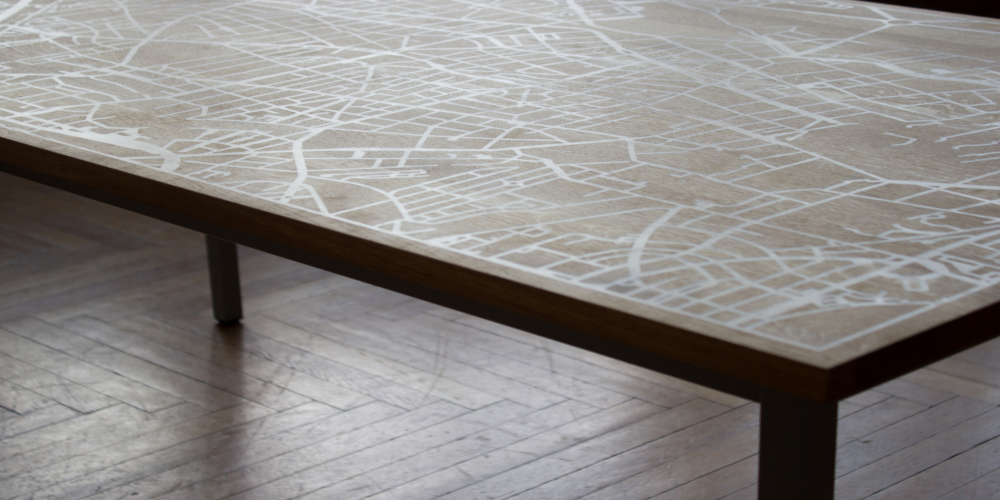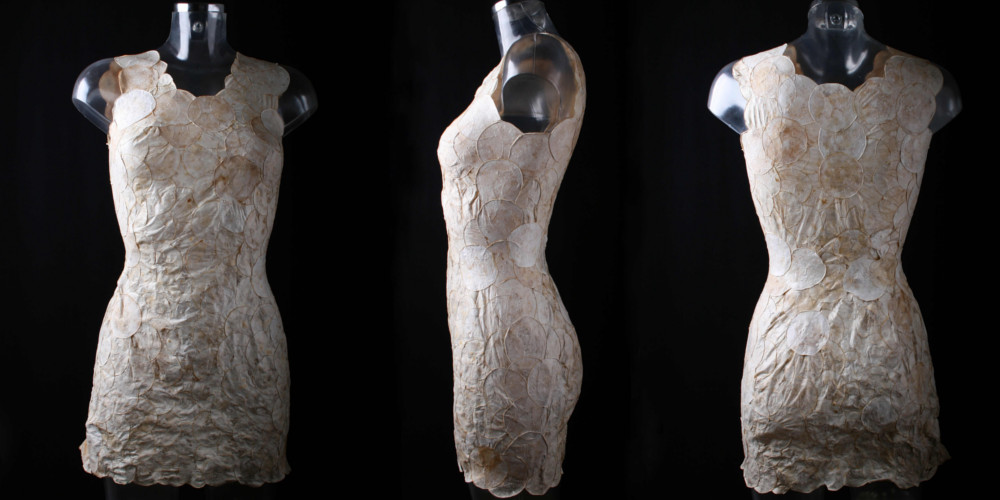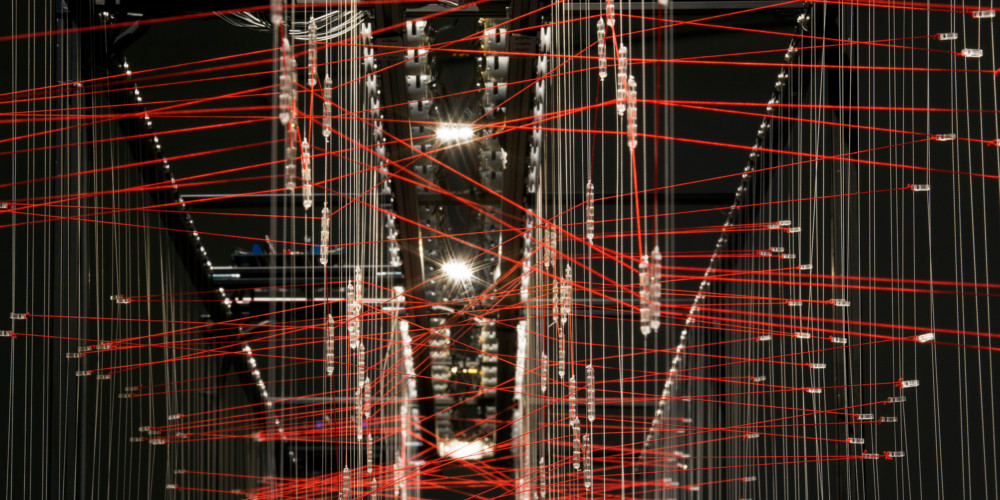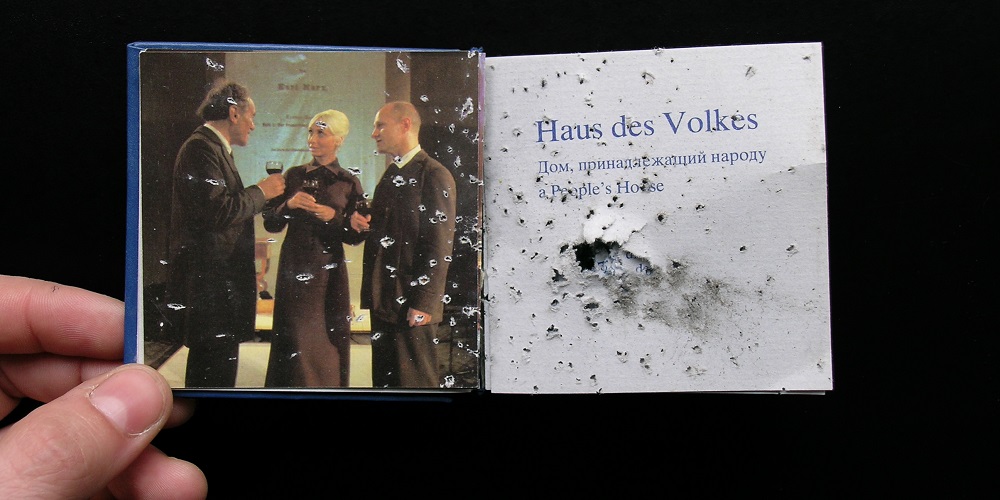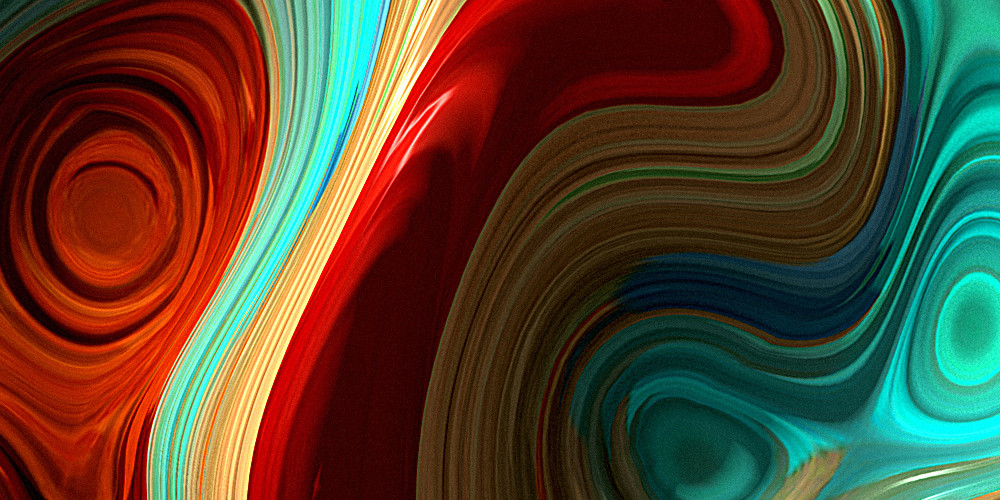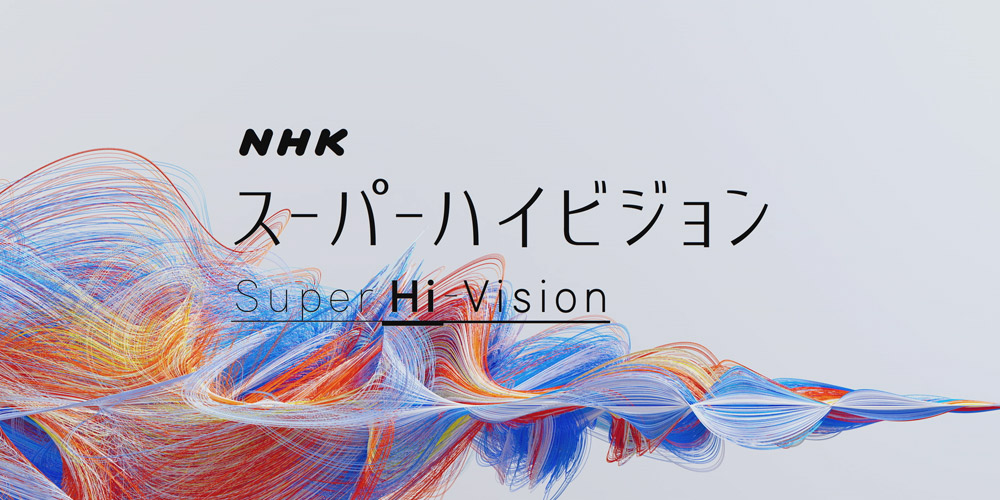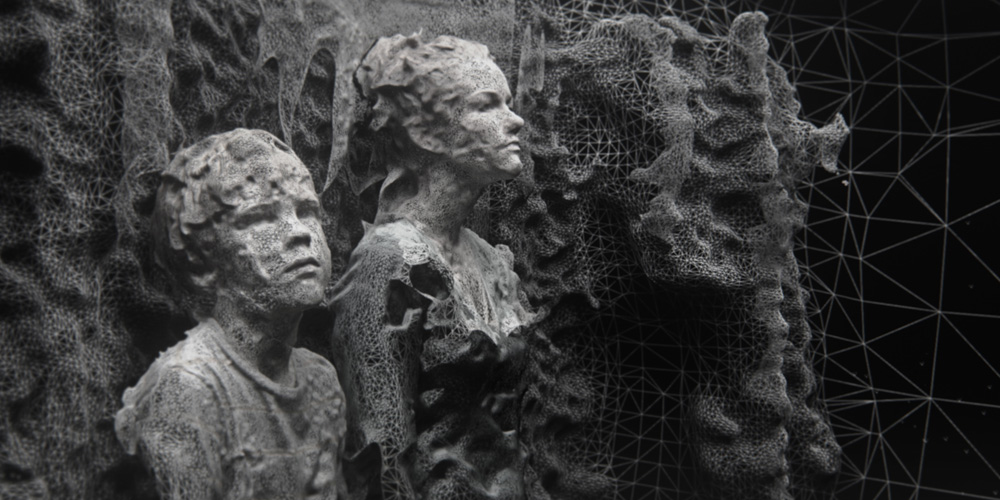
The huge current interest in forms of interdisciplinary collaboration shines what or many people is a long-overdue spotlight on the multifarious possibilities that can emerge from exchange and cooperation among, on one hand, art and creativity, and, on the other hand, science and technology. Moreover, an increasing number of observers are applauding the fact that, above all, there is finally widespread realization of a paradigm shift having occurred in a world that is now globalized not only geographically and economically but intellectually as well. Driven by correspondingly wide-ranging motivations, more and more artists are lighting out to explore these territories. They are in search of new sources of inspiration, and they also want their artistic work to make an impact beyond the confines of the art world. In going about this, they often pursue trails that were blazed long ago, and sometimes without knowing too much about that back story.
What is striking is the greatly increased readiness on the part of both individual scientists and a growing number of institutions to make a commitment to these liaisons. Such prestigious research institutions as CERN–European Organization for Nuclear Research, the European Southern Observatory and the European Space Agency now host artist-in-residence programs under the aegis of the European Digital Art and Science Network subsidized by the EU.
As a member of an extensive network of cultural institutions in Europe and other parts of the world, Ars Electronica will be displaying works created in conjunction with these artist-in-residence programs and also staging a series of exhibitions showcasing exciting, innovative projects at the nexus of art and science. New methods of fabrication and of 3-D printing, concepts for rapid prototyping, work in the field of 3-D animation, and artistic strategies for the visualization of scientific data—the exhibitions cover a broad range of approaches, many of which are still in the prototype stage. “The Alchemists of Art and Science,” the second installment in this series, spotlights speculative, futuristic visions that have emerged from the amalgamation of artistic and scientific approaches—for instance, wearables that measure cosmic radiation in their immediate surroundings; clothing grown out of fungi; a 3-D-printed lamp you can create at home with an app and a laser scanner, wearable devices designed to reduce your CO2 output; and concepts for interactive windshields.
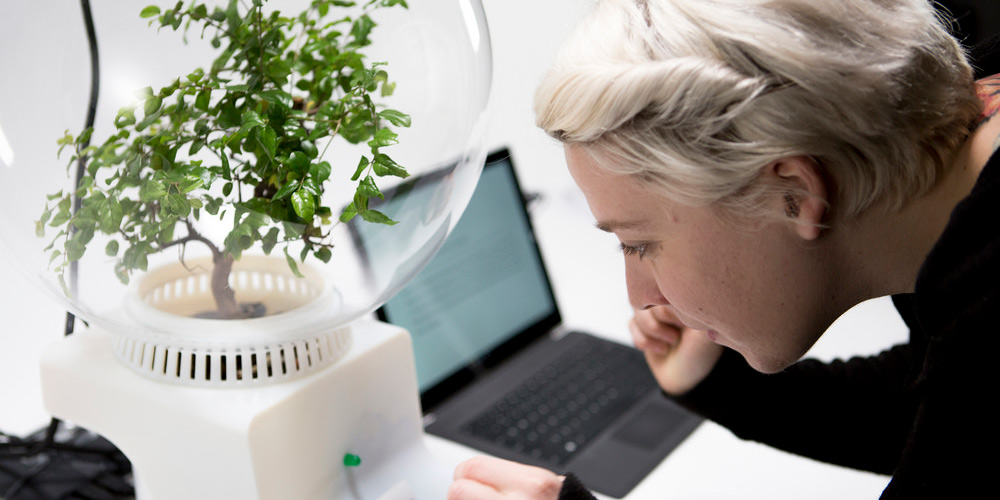
Helene Steiner, Paul Johns, Asta Roseway, Chris Quirk, Sidhant Gupta, Jonathan Lester
Nature has many languages. Project Florence takes advantage of the sensibility of plants to different light frequencies and uses it to trigger electrical responses by a plant and compares the similarities between plant signals and natural language processes.
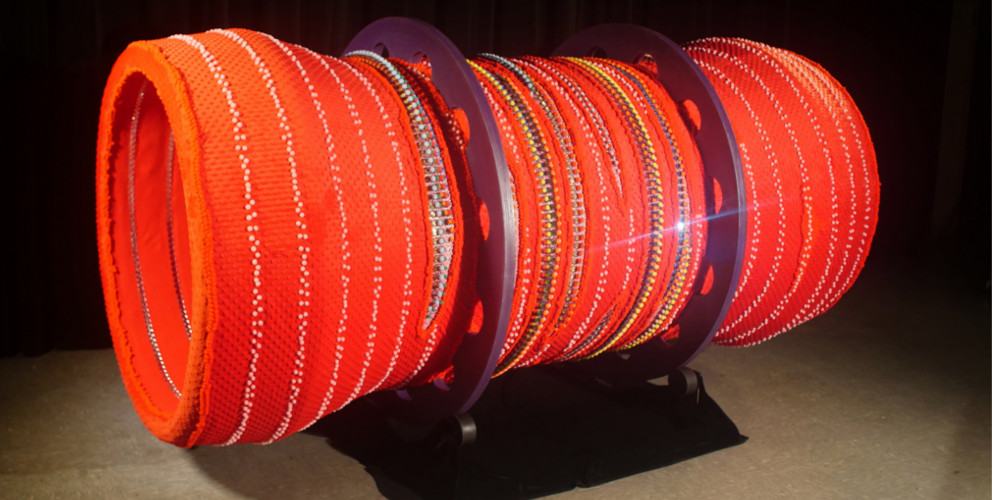
Eric Dyer
Implant is an imaginary medical device that fits into a blood vessel, neuron, etc. It is super-enlarged, making the viewer feel microscopic. With a genetic retinal disease in his family’s DNA, Dyer has closely followed developments in gene therapy, including the insertion of healthy genes into the body using viruses.
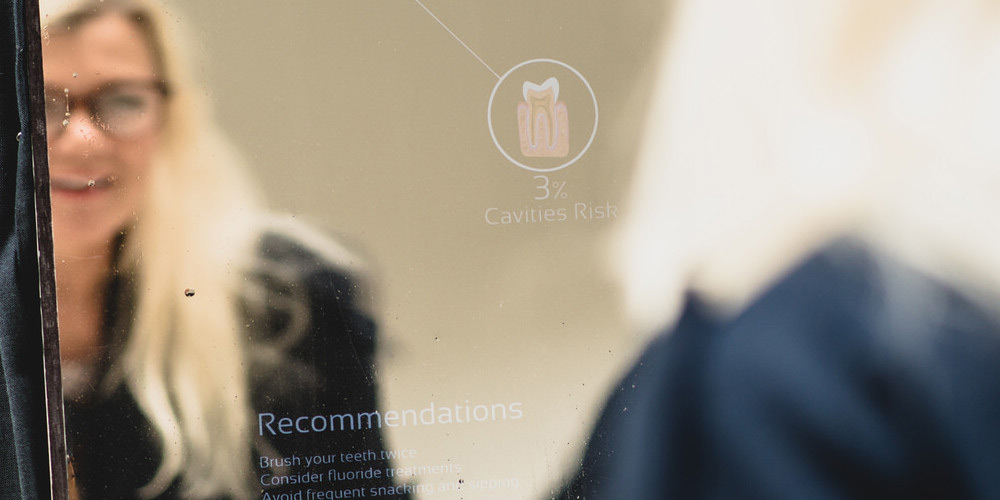
How will we look in six months if we keep up at our current rate as far as diet, dental hygiene and sports are concerned? Who’ll we see in the mirror a year from today? These questions still have to be answered with “Haven’t the foggiest,” but students at CIID are already working on another, more visionary concept. The smart Future Self Mirror is designed to enable us to gaze into the future of our physical development.
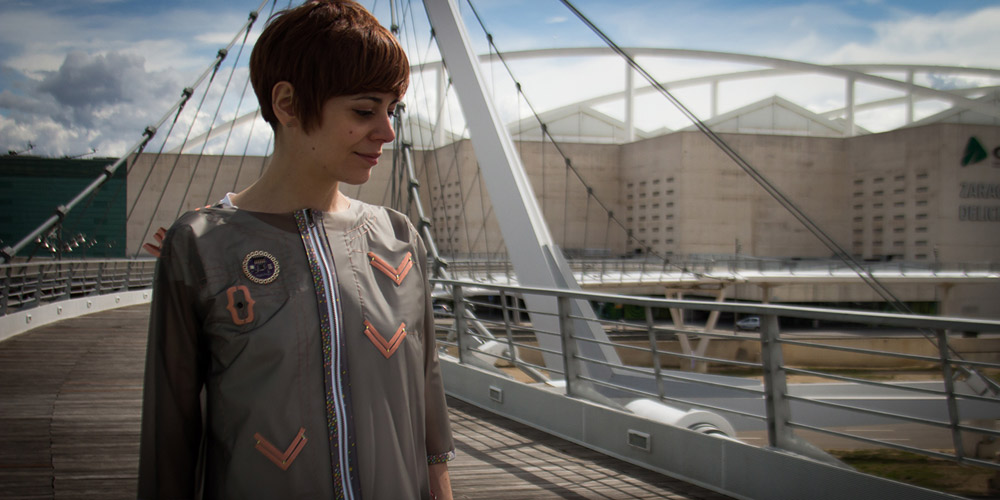
Cosmic Bitcasting employs sensors to transform the cosmic radiation that neither the Earth’s atmosphere nor the outer layer of our own body shields us from. With light signals and vibrations, the interface reports the detected presence of every elementary particle that, as radiation from outer space, has found its way through the atmosphere to us.
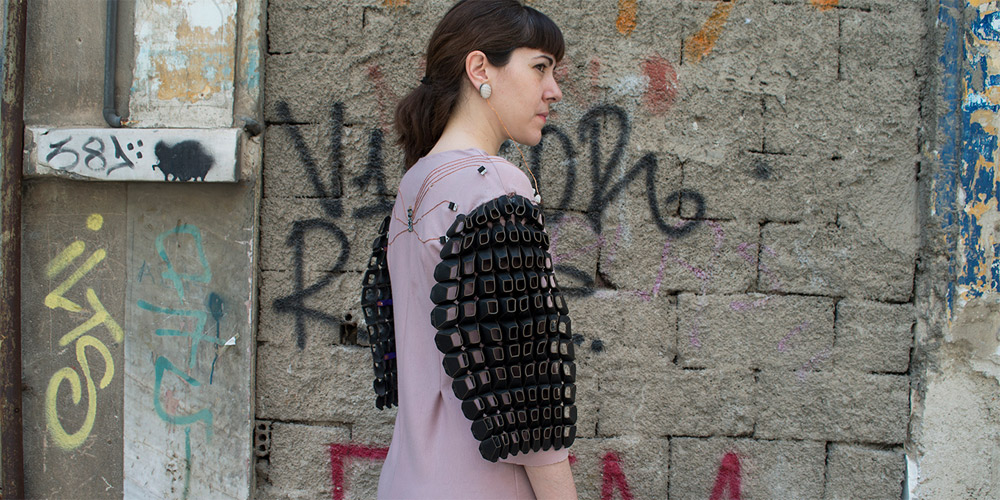
An article of clothing with sleeve appliqués of leather and copper fabric and neoprene sewn into their structure? And integrated into this electrical circuit is an Arduino microcontroller that interacts with the sleeves’ sensors and transforms the garment into a hybrid organism that reacts to the wearer’s heartbeat? How about matching earrings with a built-in pulse sensor?
Quadrature’s installation manifests the meaning of a Sisyphean task. The sole purpose of the machine is to maintain two large stones on a steel plate in perfect equilibrium. An endless succession of feedback effects and adjustments is necessary to prevent the incessantly threatening, imminent loss of balance.
Compared to the cosmic dimensions of time and space, a human life and human civilization come across as rather modest. Nevertheless, we tend to interpret findings in the field of astronomy from our limited point of view—for example, such momentous revelations as the fact that there are 40+ known planets on which water—and thus, life—could exist.
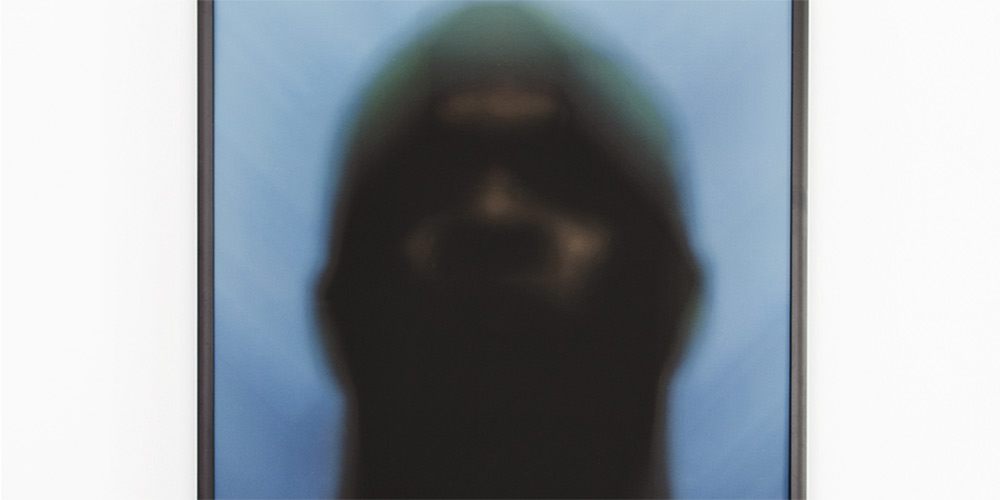
For Obscurity Paolo Cirio cloned mug shots of over 15 million U.S. prison inmates from various websites and then disguised the photos. An algorithm systematically scrambled the appurtenant information—name, age, crime convicted of and length of sentence—to make each individual completely unrecognizable.

An automobile’s windshield only had to be transparent and shatterproof heretofore. But now, “Window to the World” manifests a futuristic vision of mobility in which the glass front panel separating the passenger compartment from the world extends an invitation to a new form of interaction between inside and outside. The pane becomes an interface that moves driving beyond transportation and makes the car a vehicle for entertainment, play and information.

You’ve never seen Paris like this before. Antoine Delacharlery’s animated film isn’t just a close-up of the French metropolis; it’s as if it puts Paris under a microscope. The urban organism with its inventory of streets, buildings and open spaces as well as the people, trains and cars moving about among them comes across like a concatenation of pale cells and nerve fibers.

